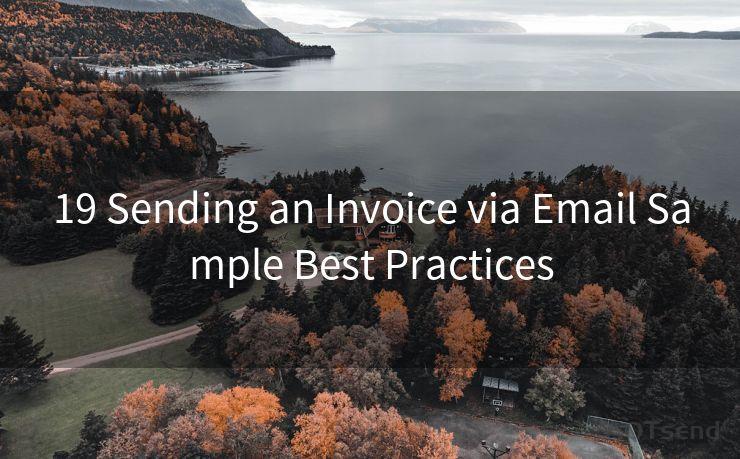19 Sending an Invoice via Email Sample Best Practices




Invoicing is a crucial part of any business transaction, and with the advent of technology, sending invoices via email has become commonplace. However, there are certain best practices to follow when emailing invoices to ensure clarity, professionalism, and efficiency. Here are 19 best practices for sending an invoice via email.
1. Clear Subject Line
Start with a clear and concise subject line that indicates the content of the email, such as "Invoice for [Service/Product] - [Invoice Number]". This helps the recipient understand the purpose of the email at a glance.
2. Professional Greeting
Always open with a professional greeting, addressing the recipient by name if possible. This personal touch adds a level of warmth and professionalism to your communication.
3. Invoice Attachment
Attach the invoice to the email in a commonly used and easily accessible format, such as PDF. Ensure the file name is descriptive and includes the invoice number for easy reference.
4. Invoice Details in the Body
Summarize the key details of the invoice in the email body, including the invoice number, date, and the total amount due. This provides a quick overview for the recipient.
5. Payment Details
Include clear payment instructions, including payment methods accepted, payment deadline, and any relevant banking or payment gateway details.
6. Contact Information
Provide your contact information, including email, phone number, and/or address, in case the recipient has any queries regarding the invoice.
7. Thank You Note
It's always polite to end the email with a thank you note, acknowledging the business transaction and expressing appreciation for the recipient's business.
8. Avoid Spam Filters
Be careful with your wording to avoid triggering spam filters. Avoid using too many salesy or hyperbolic phrases that might flag your email as spam.
9. Check Attachments
Before sending, double-check that the correct invoice is attached and that it's the latest version.
10. Use a Professional Email Address
Ensure you're sending from a professional email address that reflects your business name. Avoid using personal or free email services for business communications.
11. Test Email Delivery
Occasionally test your emails to ensure they're delivered properly and the invoice attachment can be opened without issues.
12. Follow Up
Consider sending a follow-up email if payment is not received by the due date, politely inquiring about the status of the payment.
13. Secure Attachments
If possible, consider using secure methods to send invoices, especially if they contain sensitive information.
14. Itemized Invoice
Ensure the invoice itself is itemized and detailed, listing each service or product provided, quantity, price, and any applicable taxes.
15. Due Date Prominence
Make sure the due date is prominently displayed on the invoice for clarity.
🔔🔔🔔
【AOTsend Email API】:AOTsend is a Managed Email Service for sending transactional emails. Support Email Types: reminders, authentication, confirmations, notifications, verification codes, invoices, password resets, account activations, billing statements, two-factor authentication (2FA), and one-time passwords (OTP) emails, etc. $0.28 per 1000 Emails. 99% Delivery, 98% Inbox Rate.
You might be interested in:
Why did we start the AOTsend project, Brand Story?
What is a Managed Email API, How it Works?
Best 25+ Email Marketing Platforms (Authority,Keywords&Traffic Comparison)
Best 24+ Email Marketing Service (Price, Pros&Cons Comparison)
Email APIs vs SMTP: How they Works, Any Difference?

16. Invoice Numbering System
Use a consistent invoice numbering system to help with tracking and record-keeping.
17. Avoid Unnecessary Complexity
Keep the invoice design clean and simple, avoiding unnecessary graphics or complex layouts that might confuse the recipient.
18. Provide a Receipt
Once payment is received, send a receipt acknowledging payment and thanking the customer for their business.
19. Legal Compliance
Ensure your invoices comply with all relevant legal and tax regulations in your country or region.
Following these best practices for sending invoices via email can help streamline your business processes, improve customer satisfaction, and ensure timely payments. Remember, clarity and professionalism are key when communicating with your clients or customers.




Scan the QR code to access on your mobile device.
Copyright notice: This article is published by AotSend. Reproduction requires attribution.
Article Link:https://www.mailwot.com/p5809.html



